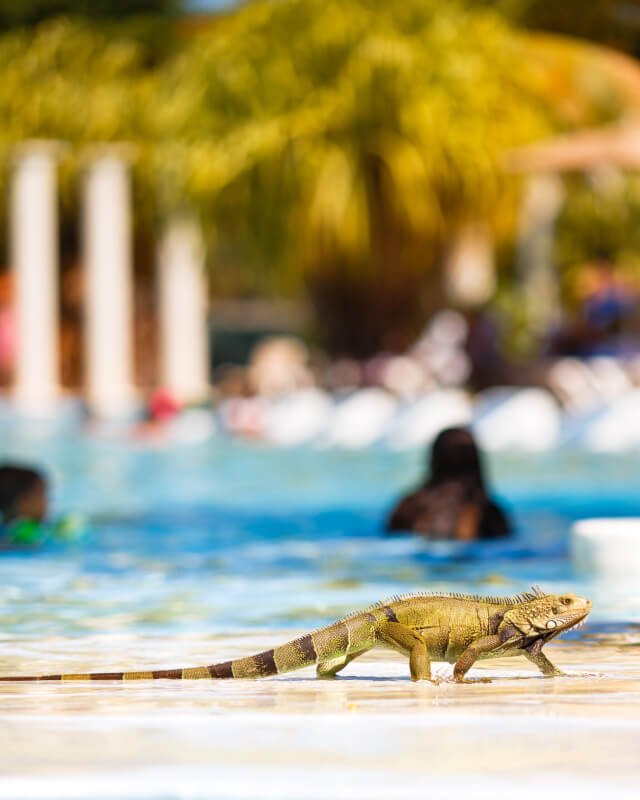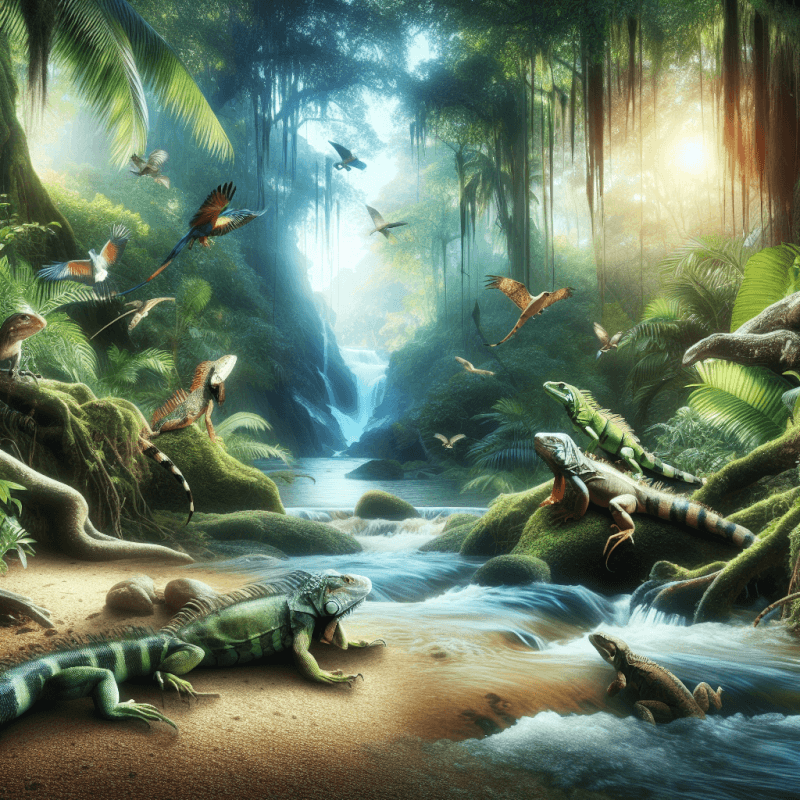Imagine a world where reptiles rule their own kingdoms, each with their own unique habitats. From the vast deserts where scaly creatures bask in the sun, to the lush rainforests where vibrant colors dance amongst the foliage – reptile habitats are as diverse as the reptiles themselves. In this article, we will explore the fascinating world of reptile habitats, uncovering the secrets that make them the perfect dwelling places for these mesmerizing creatures. So, grab your explorer’s hat and get ready to embark on a thrilling journey through the intriguing world of reptile habitats.
What Are Reptile Habitats
Reptile habitats refer to the specific types of environments where reptiles naturally live and thrive. These habitats provide the necessary resources and conditions for reptiles to carry out their daily activities, including finding food, seeking shelter, reproducing, and maintaining their body temperature. The various types of reptile habitats can be classified based on factors such as topography, climate, vegetation, and water availability.
Definition of Reptile Habitats
Reptile habitats are the natural environments or ecosystems in which reptiles live and fulfill their biological needs. These habitats encompass a wide range of terrestrial, aquatic, arboreal, and burrow habitats that are essential for the survival and well-being of reptiles. Each reptile species has specific habitat requirements which are crucial for their survival, and any alteration or destruction of their habitats can have detrimental effects on their population.
Types of Reptile Habitats
Reptile habitats can be broadly classified into four main types: terrestrial habitats, aquatic habitats, arboreal habitats, and burrow habitats. Each type of habitat offers unique features and resources that cater to the specific needs of different reptile species.
1. Terrestrial Habitats
Terrestrial habitats are land-based environments that include various ecosystems such as forests, grasslands, and deserts. They are home to a diverse array of reptiles with different adaptations to survive in these distinct ecosystems.
1.1 Forests
Forest habitats provide an abundance of vegetation and cover, making them suitable for reptiles that require ample hiding places and a wide variety of prey. These habitats often support reptile species like snakes, lizards, and turtles.
1.2 Grasslands
Grasslands are characterized by open spaces, low-lying vegetation, and a moderate climate. Reptiles found in grassland habitats include snakes, tortoises, and some lizard species.
1.3 Deserts
Desert habitats are often dry and arid, with extreme temperature variations. Reptiles that thrive in desert environments, such as various species of snakes, lizards, and tortoises, have evolved unique adaptations to withstand the harsh conditions, such as water conservation abilities.

2. Aquatic Habitats
Aquatic habitats refer to water-based environments, including both freshwater and saltwater ecosystems. They provide a home for reptiles that are adapted to live and hunt in water.
2.1 Freshwater Habitats
Freshwater habitats, such as lakes, rivers, and ponds, are inhabited by reptiles like turtles, crocodiles, alligators, and various species of water snakes. These reptiles rely on the abundance of aquatic plants and prey present in these habitats.
2.2 Saltwater Habitats
Saltwater habitats, such as oceans, seas, and estuaries, are inhabited by marine reptiles, including sea turtles and marine iguanas. These reptiles have specialized adaptations to live in saltwater environments and are often found in specific coastal regions around the world.
3. Arboreal Habitats
Arboreal habitats consist of trees and other elevated structures where reptiles live and move primarily in the branches and foliage. These habitats are home to reptile species like tree-dwelling snakes, lizards, and geckos.
4. Burrow Habitats
Burrow habitats are created by reptiles themselves or utilized from existing burrows of other animals. These underground habitats provide shelter and protection from extreme weather conditions and predators. Reptiles such as tortoises, lizards, and snakes that spend a significant part of their lives in burrows are well adapted to these environments.

Factors Affecting Reptile Habitats
Reptile habitats are greatly influenced by a variety of factors that shape their suitability and availability. Understanding these factors is crucial to conserving and protecting reptile populations and their habitats.
1. Climate
Climate plays a significant role in determining the distribution and abundance of reptiles. Reptile species have evolved to inhabit specific climatic zones, and alterations in temperature and precipitation patterns can greatly impact their habitats.
2. Vegetation
The presence and diversity of vegetation within a habitat are crucial factors for reptiles. Vegetation provides food sources, hiding places, and suitable substrates for egg-laying. Changes in vegetation due to deforestation, habitat fragmentation, or invasive species can have profound impacts on reptile habitats.

3. Water Availability
Water availability is essential for reptile survival, especially for those inhabiting aquatic or semi-aquatic habitats. Access to suitable water sources, such as freshwater bodies or saltwater environments, significantly influences reptile distribution and abundance.
4. Solar Radiation
Reptiles are ectothermic, meaning they rely on their external environment to regulate their body temperature. Solar radiation and the availability of sun-exposed areas are crucial for reptiles to thermoregulate properly. The presence of suitable basking spots and the ability to access them impacts reptile habitat suitability.
5. Soil Composition
Soil composition plays a role in determining the type and abundance of prey that reptiles rely on. Certain reptile species require specific soil conditions for egg-laying or burrowing, and alterations in soil composition can affect their habitat suitability.

6. Prey Availability
The availability of prey species within a habitat directly impacts reptile populations. Changes in prey abundance or the introduction of non-native species can disrupt the delicate balance of the ecosystem and impact reptile populations.
7. Human Impacts on Reptile Habitats
Human activities, such as habitat destruction, pollution, climate change, and the introduction of invasive species, pose significant threats to reptile habitats. These impacts can lead to habitat loss, fragmentation, and degradation, resulting in declines in reptile populations worldwide.
Benefits of a Suitable Habitat for Reptiles
A suitable habitat is vital for reptiles to thrive, and the presence of these habitats offers numerous benefits for reptile species.
1. Food Availability
A suitable habitat provides a sufficient supply of prey species for reptiles to feed on. Availability of food sources ensures the survival and growth of reptile populations in their natural environments.
2. Shelter and Protection
Habitats with a variety of hiding places, such as vegetation, rocks, or burrows, offer reptiles protection from predators and harsh environmental conditions. These shelters also allow them to rest and recover, contributing to their overall well-being.
3. Breeding and Reproduction
Suitable habitats provide appropriate nesting sites, substrate, and moisture conditions for reptiles to lay eggs and ensure the survival of the next generation. The presence of these crucial reproductive resources is essential for sustaining reptile populations.
4. Thermoregulation
Reptiles rely on external heat sources to regulate their body temperature. Suitable habitats with access to sunlight or warm areas enable reptiles to effectively thermoregulate, ensuring optimal physiological functions.
Conservation of Reptile Habitats
Conserving reptile habitats is crucial to maintaining healthy reptile populations and preserving biodiversity. Several conservation strategies can help protect reptile habitats.
Efforts can include establishing protected areas, implementing sustainable land use practices, restoring degraded habitats, controlling invasive species, and raising awareness about the importance of reptile conservation.
Conclusion
Reptile habitats encompass a wide range of ecosystems and environments that support diverse reptile species. Understanding the types of reptile habitats, the factors influencing them, and the benefits they offer reptiles is essential for their conservation and protection. Through effective habitat management and conservation efforts, we can ensure the continued existence of reptiles and maintain the delicate balance of our ecosystems.


